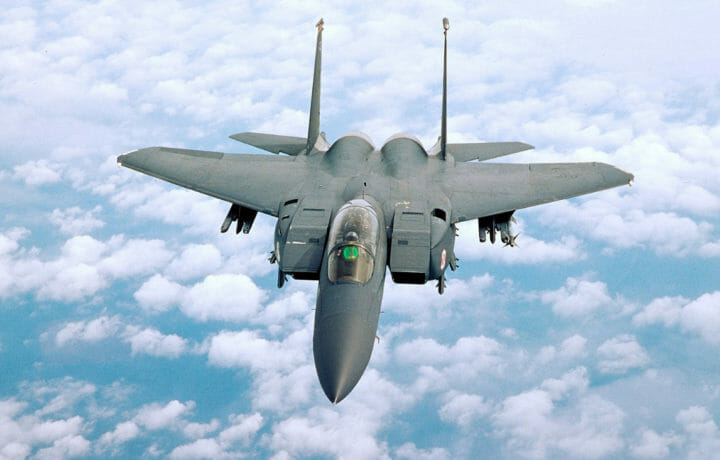The McDonnell Douglas F-15 Eagle first took flight in 1972, and it entered service with the United States Air Force in 1976. It is among the most successful modern fighters every produced, and to date, not a single aircraft has been lost in aerial combat. More than 1,500 F-15s are in service worldwide – and both the Air Force and U.S. Air National Guard continue to operate the aircraft.
Keeping some of the aging aircraft flying however is no small challenge. Defense contractors such as ISO Group continue to provide the military spare parts and components for the F-15 Eagle and its variants, but there are still times that a part isn’t available.
That is where individuals such as Master Sgt. Paul Allen, a structural maintenance technician at the U.S. Air Force’s 173rd Fighter Wing, step in. He and other structural maintainers have emerged as artisans – creating parts by hand, and meticulously shaping them from custom wood forms and delicate hand-tool work. Allen and others must gently tap away with a small hammer, slowly giving shape to a sheet of aircraft-grade aluminum so it will slide into the tight confines of an F-15 fuselage with an expected tolerance of .005 of an inch.
Such precision is necessary because of the thousands upon thousands of parts that make up an F-15, and many of those are simply no longer available in the supply system and some haven’t been available for decades.
“It’s a 50-50 shot when you need a part that it’s out there,” said Master Sgt. Allen.
3D Technology to the Rescue
Allen and his structural maintenance co-workers must often make new parts. It is a time-consuming process that begins by covering the old part with tape, then carefully cutting away a section to give them a rough pattern for the new part, which is used to trace that part on a new piece of metal.
Even after it is traced, it must be cut with hand-tools and carefully refined. But even then it isn’t always possible to get to .005 of an inch this way, which is the acceptable tolerance for the parts Allen and his team work on. In some cases, it can take 27 or more hours to get the part just right.
But an emerging technology can shorten that process to seven hours for some parts. It involves the use of 3D or additive printing, which takes the place of a wood mold, which Allen and his team has relied on for years.
“We’re definitely using innovation to save time and money,” explained shop supervisor, Master Sgt. Joshua Fuhrer. “If you think about carving a tool from wood, that’s something that goes back to the 1950’s, now we are printing parts in a matter of hours and that’s cutting edge.”
The mold is very strong, printed from a carbon filament, and it proves vastly more durable that a wood mold – and can be reprinted to be exactly the same parameters time and time again.
Printing the Parts
3D printing isn’t just being utilized to help make molds for old parts for the F-15. It is also being employed to keep the Cold War Rockwell B-1B Lancer bombers flying. At Tinker Air Force Base (AFB), Oklahoma, last year the Reverse Engineering and Critical Tooling Lab printed an avionics bracket for a B-1B Lancer.
It was the first metal additive manufactured part printed by REACT to be on a flying aircraft. In addition to being part a major step forward for the lab in terms of additive manufacturing capability, it also successfully saved $22,000 in production costs. It further dramatically reduced the time needed to acquire the part during the usual acquisition process.
“The future implications of this is that we’ll start to see more parts like this coming from the different [system program offices],” said Jason McCurry, 76th Composite Maintenance Group lead engineer in the additive manufacturing cell at REACT. “You’ll start to see the proliferation of metal parts not only here at Tinker but across the Air Force over the next 15 years and this really is a game-changer when you start to consider diminishing sources of repair throughout the nation.”
Printing Trumps Cannibalizing
Metal additive manufacturing has also been applied to the production of an oil lubrication system for the GE F110 engine, which powers the General Dynamics F-16 Fighting Falcon. As with the B-1B, printing the parts is considered a marked improvement over the time-tested method of keeping aging warbirds flying – which was to simply take old parts from aircraft that had also been in service for decades.
While the Air Force continues to cannibalize older B-1Bs and other aircraft, this ensures that a part is reliable because it literally is as new as it can be. Unlike castings, the parts can be more precise as well.
The biggest benefit with metal additive manufacturing is that the costs can be kept down and parts printed as needed. So instead of large production runs, a single part can called up on a computer and available with the press of the mouse.




